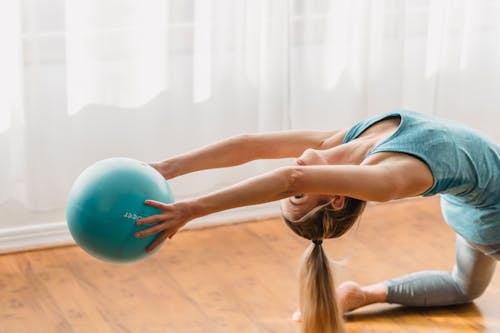What Not To Do After Knee Replacement?


Moreover, a knee replacement may relieve pain and enhance the quality of life dramatically. Whether you picked a top-tier doctor for your treatment, a favourable result will also need your active involvement. The discomfort is a warning to take your time in the days after surgery, but once the agony disappears, it is simple to forget that you are still in the healing process. Even if you're feeling better, here is what not to do after knee replacement surgery.

Knee replacement surgery or knee arthroplasty may help minimise discomfort and repair badly damaged knee joints. The operation entails removing diseased cartilage and bone from your kneecap, shinbone, and thighbone, substituting it with a prosthetic joint, high-grade plastics, and metal alloy.
Furthermore, a physician evaluates your knee's joint power, sturdiness, and mobility to determine if a knee replacement is best for you. X-rays also assist in determining the amount of the impairment. Depending on your general health, shape, knee size, activity level, weight, and age, your physician may select from several knee replacement prostheses and surgical approaches.
The most frequent reason for a knee replacement procedure is to address extreme osteoarthritic pain. Patients who require knee replacement surgery often have difficulty getting in and out of chairs, climbing, and walking. Many people experience knee discomfort even while they are at rest.

Knee replacement recovery is a continuous thing. A complete recovery might require anything from 6 months to one year or more. In addition to the epidermis and lower connective tissue, cartilage tissue and bone are removed throughout the surgery. The mending procedure takes time, so don't hurry back into strenuous exercise. Although it may appear counterintuitive, beginning rehabilitation soon following surgery is also critical.
Your physician and physical therapist will provide you with a list of postoperative don'ts to assist you in healing and prevent damage. It is critical that you strictly adhere to them. In the meanwhile, here are some things to avoid after knee replacement surgery.
Physical therapists are equipped with the knowledge to assist individuals in rehabilitating safely. After your therapist's knee replacement, rehabilitation exercises will maintain you active enough to aid recovery but not to the point where you risk harm.
When your doctor has given you a brace, crutch, walker other supportive equipment, you must utilise it as directed until you have been cleared to remove it. If you abandon it too soon, you risk reinjuring the operated limb and compensatory problems in other areas of your body.
Low chairs, soft sofas, stools, rocking chairs, and low automobile seats necessitate substantial leg strain while rising. Utilise only upright straight-back seats and your walkers or cane to support part of your weight while standing up for the first several months following knee replacement surgery. Laying a cushion on a seat or in a vehicle seat might assist you in getting up once you are ready.
Lifting puts strain on your joints. Carrying something heavier than a coffee cup should be avoided for many weeks following surgery. When you enjoy lifting weights at the gym, your physiotherapist will advise you if it is safe and may assist you in finding alternatives.
Flip flops and other shaky shoes might lead you to slide, twist, or rotate your leg in a manner your recently treated knee cannot. Wear durable shoes with a solid grip to reduce your chance of injury. Indoors, be willing to dress in grip socks as well.
Jogging and running put repetitive strain on the knee and should be prevented following knee replacement. If you want to run again after knee replacement, you will require months of hard physical training to strengthen your muscles sufficiently to safeguard your knee. A physiotherapist could assist with this, but the level of therapy needed goes much beyond what is generally anticipated for knee replacement recovery.
Downhill skiing, like jogging, could be highly taxing on the knees, especially if you are new to the activity. Even expert skiers must wait three months following knee replacement until hitting the slopes. Throughout that time, a major focus on rehab will be necessary. Skiing must be resumed gradually and only in excellent, fluffy circumstances.

High-intensity, high-impact sports like tennis, basketball, handball, football, soccer, and hockey impose strain on the knees and raise the risk of damage. Scuba diving, kayaking, golfing, cycling, and swimming are all low-impact activities that will put less strain on your new knee.
Although hiking is a terrific way to engage in several exercises and experience the great outdoors, irregular terrain might lead you to fall, pivot, twist, or trip, damaging your operated limb. Pack your assistive technologies, wear good hiking boots, and adhere to flat, incline-free routes until your physical therapist settles you for more strenuous hiking circumstances.
All of your physiological systems collaborate to help you recover. A good diet and enough sleep can help promote recovery following knee replacement surgery. The more you prioritise your general health, the faster you recuperate and return to doing what you like.

Most knee replacement rehabilitation treatments, such as the knees pointed straight ahead, attempt to enhance movement range and quadriceps muscular strength. Engaging with your orthopaedic physician is critical to developing the best programme possible after surgery. Here are some workouts that doctors prescribe at various phases of rehabilitation.
Simple activities are suggested before departing the hospital to assist the knee recovery movement. For instance :
Straightening the knee. Squeeze the muscles above the knee using a tiny wrapped towel beneath the heel and attempt to extend the knee fully. Maintain the position for 5 to 10 seconds.
Knee stretches on the bed. While resting in bed, move the sole of your foot over the bed's covering towards your buttocks. When you attain the knee bend, maintain the posture for 5 to 10 seconds before straightening the leg again.
A physical therapist will typically assist you in learning how to operate and walk, including an assistive device in addition to these activities.
Numerous patients can resume most everyday activities, as well as low-intensity training, three months following surgery.
Golfing
Low-impact dancing
Swimming
Light weightlifting
Many patients may begin to engage in more demanding sports such as doubles tennis, harder weightlifting, and more intensive kinds of dance six months following surgery. Always see your doctor if you have concerns about a particular activity or sport.

Do take exercise recovery seriously.
After the surgical procedure, consider following your doctor's orders. This involves doing all the exercises your physical therapist gives, especially if they are painful. Although you might feel some discomfort and frustration, keep optimistic and persevere. The outcome will be worthwhile. Use your recommended meds and take a lot of rest to assist your knee in recovering correctly.
Do make use of heat and ice.
Inflammation after knee surgery might continue for three to six months. To relieve swelling and discomfort, ice packs are indicated. After the initial inflammation has subsided, alternating between using heat and ice to soothe the muscles and ease stiffness. See your physician or physical therapist when the ice does not assist or if you wish to attempt longer durations of heat or cold.
Make an effort to be your healthiest self.
Maintaining good health can help you recuperate more quickly. When you constrict, slowing the recovery process. Maintain a healthy weight; additional pounds put more strain on your knee joint and might impede your rehabilitation. Increase overall blood flow by strengthening the muscles in your legs.
Take note that doing workouts too soon might employ risk.
Excessive movement or activity might raise the likelihood of the bones surrounding the implants breaking or loosening. Excessive force may also cause additional discomfort and edema around the knee, delaying recovery and making the activity more challenging.

You should visit a physician when you believe you pushed yourself excessively hard and might have harmed yourself. Prolonged pain and stiffness, inflammation of the lower leg or knee, warmth, and other strange feelings surrounding your knee are common symptoms. Relax and ice your knee initially, but do not put off seeing a doctor if the symptoms persist.
Even though knee replacement surgery is a standard treatment, it requires a while to recuperate and return to normal activities. There are several things your physician advises you to take to make your quick recovery. At the same time, some at-home exercises and activities are not permitted following knee replacement.
Understanding what to avoid doing following knee replacement will assist you in preventing potential problems, such as jerking and twisting the knee, and it may also help you heal faster. Intense workouts which increase the likelihood of loosening or breaking the bones surrounding the implants, such as rugby, baseball, basketball, soccer, football, leaping, and running, offer danger and must be avoided.
Plus get the inside scoop on our latest content and updates in our monthly newsletter.